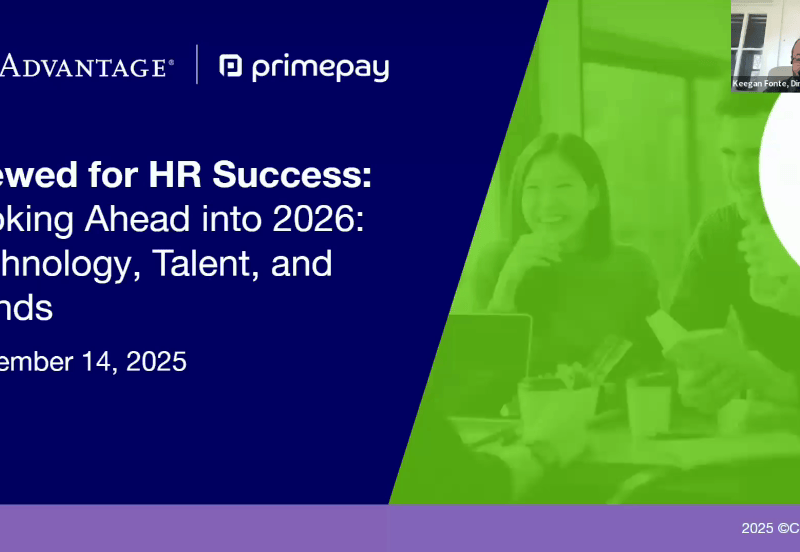For generations, employees marched into workplaces and punched in their time cards. Managers made mental notes of who was present, productive, and on task.
Today, measuring time and attendance is more complicated. People work from home. Crews show up directly to job sites. Hours fluctuate (which isn’t necessarily a good thing, new studies show).
But while what work looks like has shifted, time-tracking really hasn’t; 38% of U. S. businesses (WagePoint) still use paper time cards or spreadsheets for time and attendance. These outdated time-tracking systems create more problems than they solve and are equally a pain for the employees who use them and the HR teams that track the data.
Instead of using inaccurate and time-consuming processes, HR leaders should consider time and attendance software to make a measurable difference in productivity and cost.
Here are five signs that help you know if you’re overdue for a time-tracking system upgrade (and a way to calculate what a lack of a time-tracking system costs you).
1. Your Payroll Consistently Has Errors
Payroll errors are made by one-third of employers. Forty percent of small businesses are penalized for mismanaging the payroll process. Inaccurate pay isn’t a new issue, but is one that companies must prioritize and tackle head-on.
There are a few reasons as to why your payrolls numbers are off, including:
- Estimating time worked: A study by Accelo found that people who logged their time every day were 66% accurate, which sounds low until you learn that those completing their timesheet once a week were only 35% accurate. People forget their exact hours and estimate their time, leading to inaccurate reporting.
- Forgetting to clock out: Companies using physical time sheets often fall victim to employees failing to clock out. The result? Extended time on the timesheet or inaccurate time documented.
- Buddy punching: Sixteen percent of employees admit to clocking in a friend at work, which doesn’t sound too bad (we’ve all run late, right?) until you crunch the numbers. Buddy punching leads to roughly $11 billion paid for unworked time across the United States.
- Wage theft: Alternatively, wage theft (when companies violate minimum wage laws or don’t pay overtime) results in employees working without pay. Wage theft affects 17% of low-wage employees and causes many families to fall below the poverty line.
Why It Matters: Running inaccurate payroll is an issue whether you’re underpaying or overpaying employees. Accurately paying your people not only keeps finances in check but also creates a culture of fair and equitable compensation.
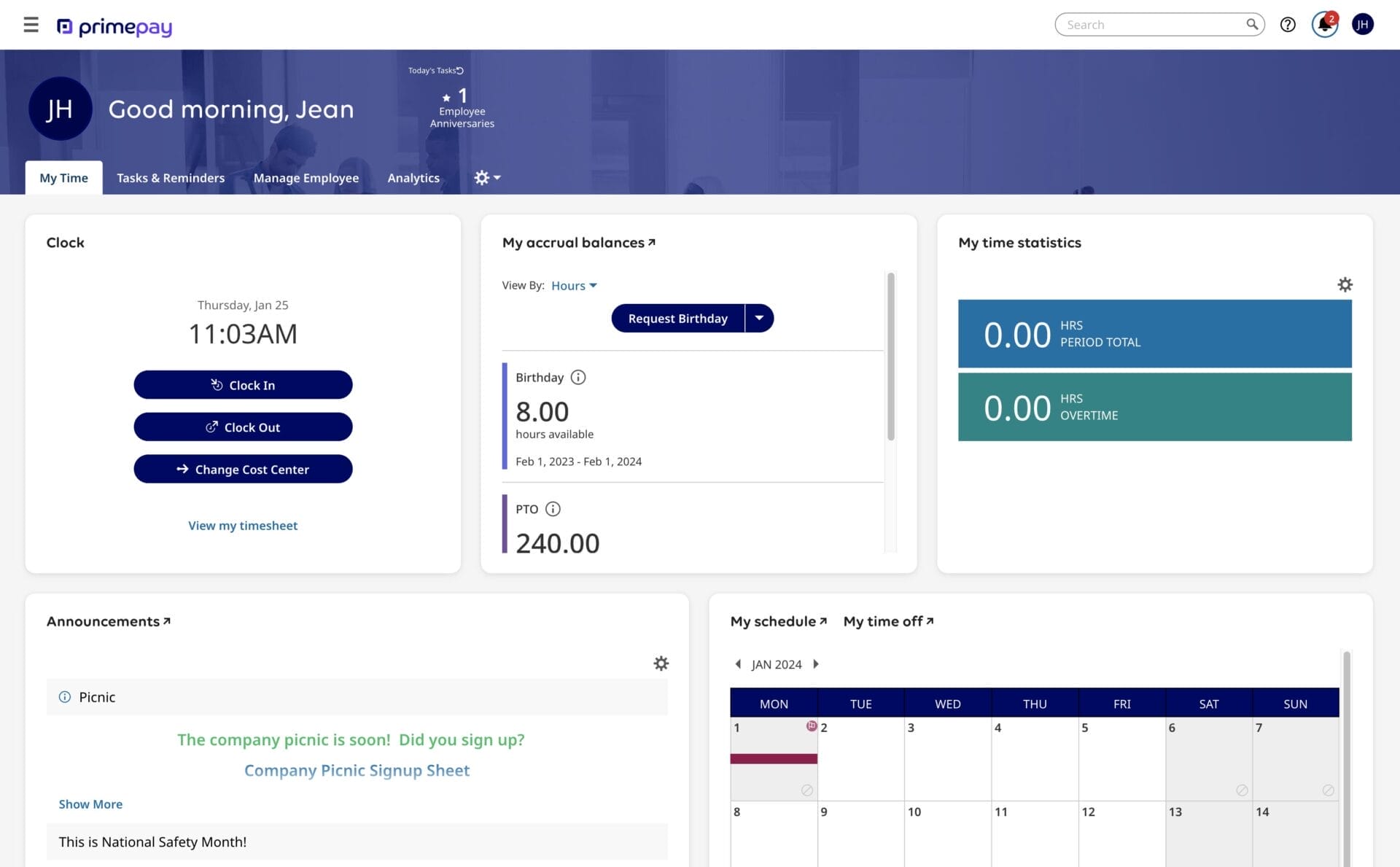
Screenshot of time management interface in software for employees
2. You Have Trouble Handling Leave Cases
Who’s on leave? What’s the company’s disability policy? Where is Susan today? No, this isn’t an Abbott and Costello routine. Instead, it’s a line of questioning that may arise when you don’t have built-in absence management.
If you’re using outdated attendance and time tracking software (or worse – a dry-erase calendar in the break room), you have almost zero visibility into your workforce. This lack of insight affects your ability to enforce leave policies, mitigate absenteeism, and support employees’ return to work.
Why It Matters: When you don’t know where your people are – or why – you can’t support employees appropriately. Whether they’re out on parental leave or taking short-term disability, it’s important to know when they’ll return and what they’ll need to be their best selves at work.
3. You Can’t Accurately Track PTO Accrual
PTO is a significant employee benefit (and a competitive recruiting strategy). But if your employees need help understanding how many days they have left or even how to take time off, HR teams will spend hours emailing back and forth instead of tackling their to-do lists. Additionally, if you can’t view PTO accrual on the back end, you’ll have limited insights into your people data and struggle to make impactful PTO and benefits decisions.
Why It Matters: Without a reliable system of tracking PTO, you open the door to various personnel, management, and compliance problems that can have a more considerable impact on your workforce over time. You must track PTO accrual accurately so employees aren’t short-changed on their due time off. Additionally, you’ll want to track PTO hours to ensure they’re appropriately capped for each employee per your company’s rules and any unused time is paid out or carried over.
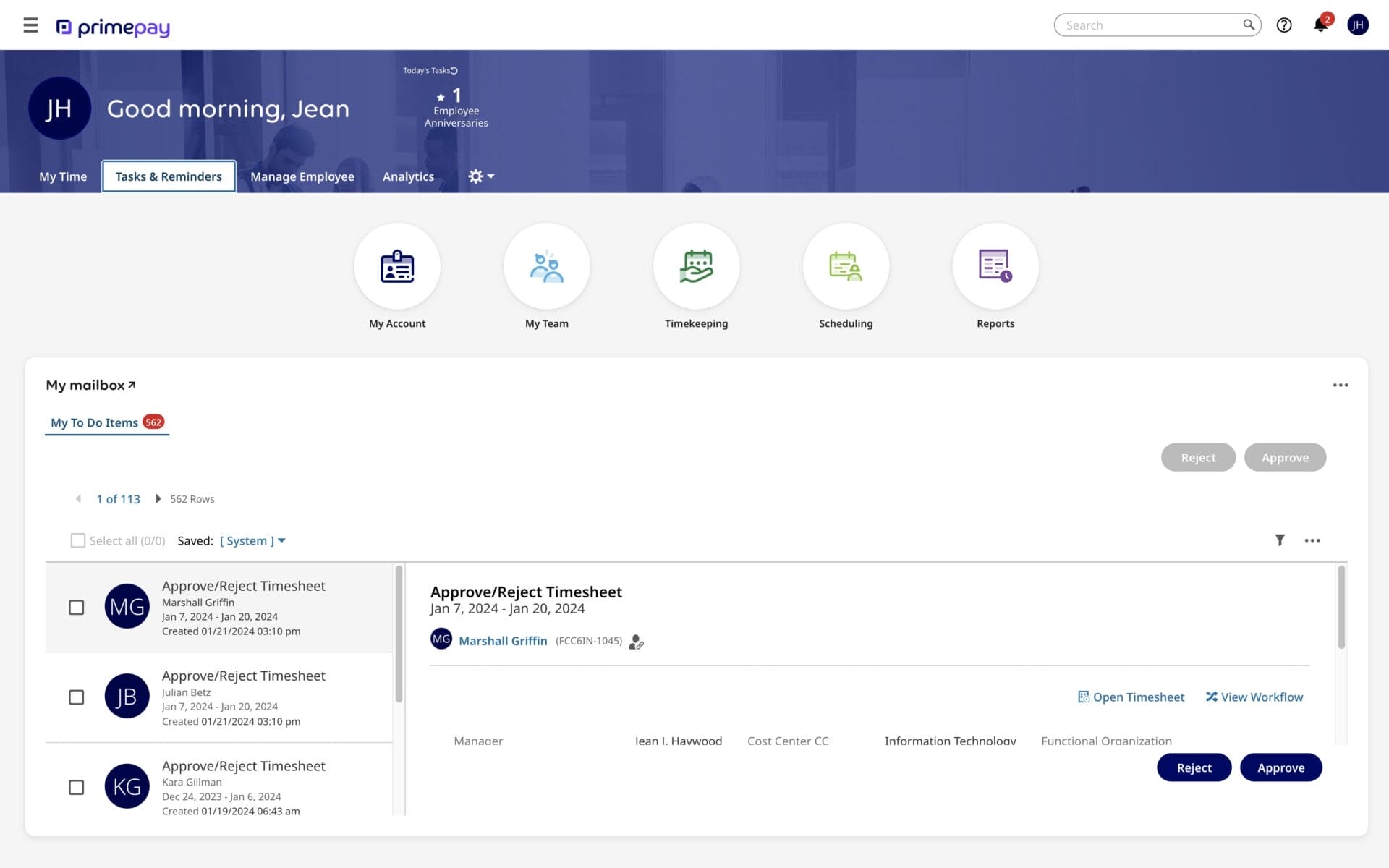
Task and reminder software screenshot
4. You Lack Visibility into Schedules
It’s often difficult to schedule employees based on their preferences or history on outdated time and attendance systems. And on-the-fly schedule adjustments? Forget about it.
Without reliable scheduling data, you can’t forecast overtime, compare projected and actual worked hours, and gain an understanding of labor costs — all of which hamper your ability to make necessary budget and labor decisions.
Why It Matters: When you have records of past schedules and a view of employees’ availability, you can forecast and schedule better in the future. You can also prepare schedules ahead of time for a better employee experience. Stable scheduling is critical in retail, food service, and hospitality industries, where 75% of employees say they want a more regular schedule with fewer shift changes.
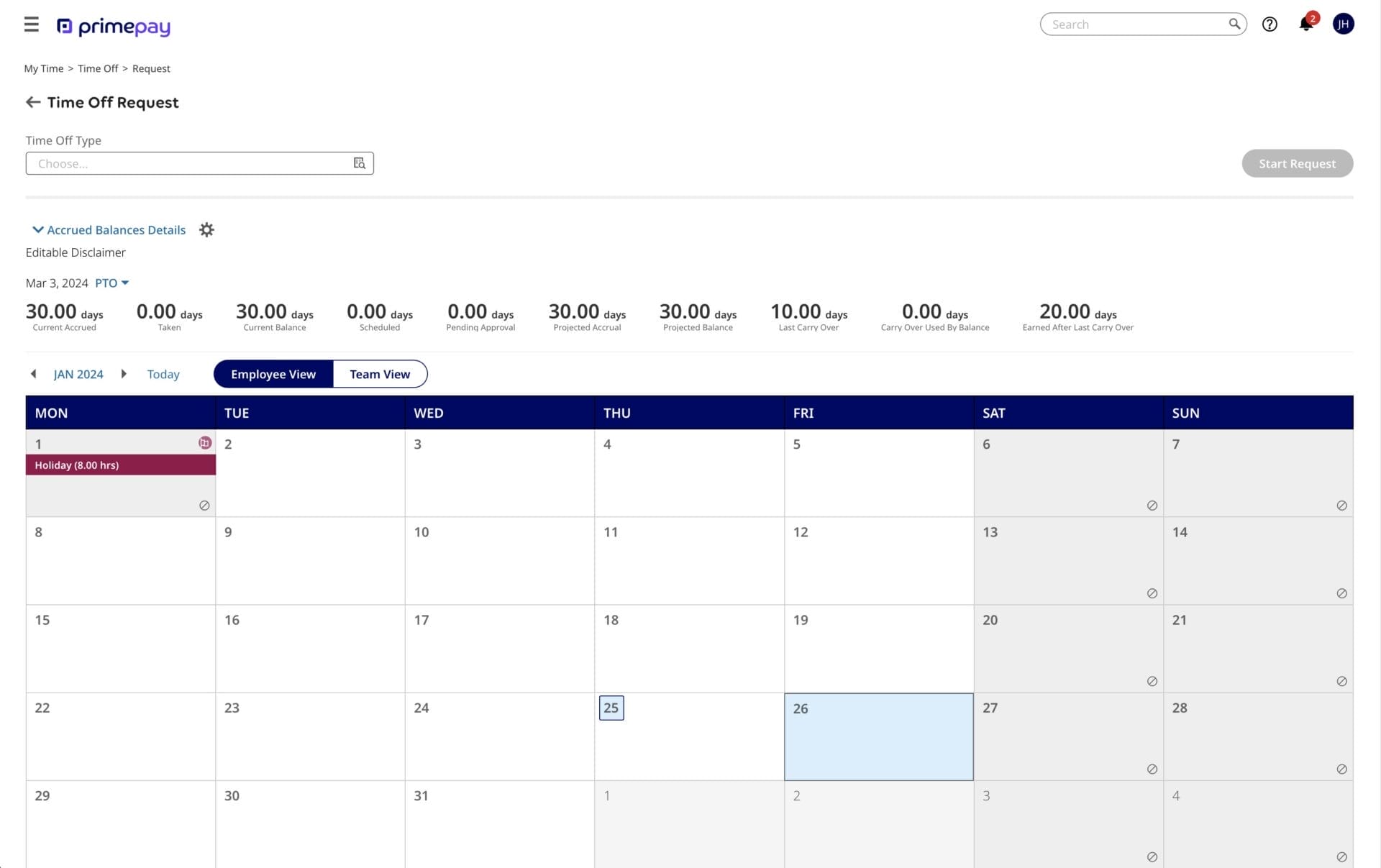
Schedule and staffing calendar screenshot
5. Your Reporting is Inefficient
Besides knowing what to pay your employees, your time and attendance reports provide critical insights into your workforce management strategy. If your reports have gaps or uncertainties, accurate calculations and strategic decisions go out the window.
Take Teriyaki Madness, a Franchise 500 company, for example. Before switching to our time racking software solution, their data lived in a binder that was updated once a month. Besides the inability to ensure confidentiality, their binder system made creating accurate benchmarks and goals challenging, hindering their profitability.
Why It Matters: Accurate and efficient reporting affects everyone involved with the business. Understanding labor costs leads to better employee pay and benefits decisions, and up-to-date financial information helps estimate projects, price products, and set realistic goals.
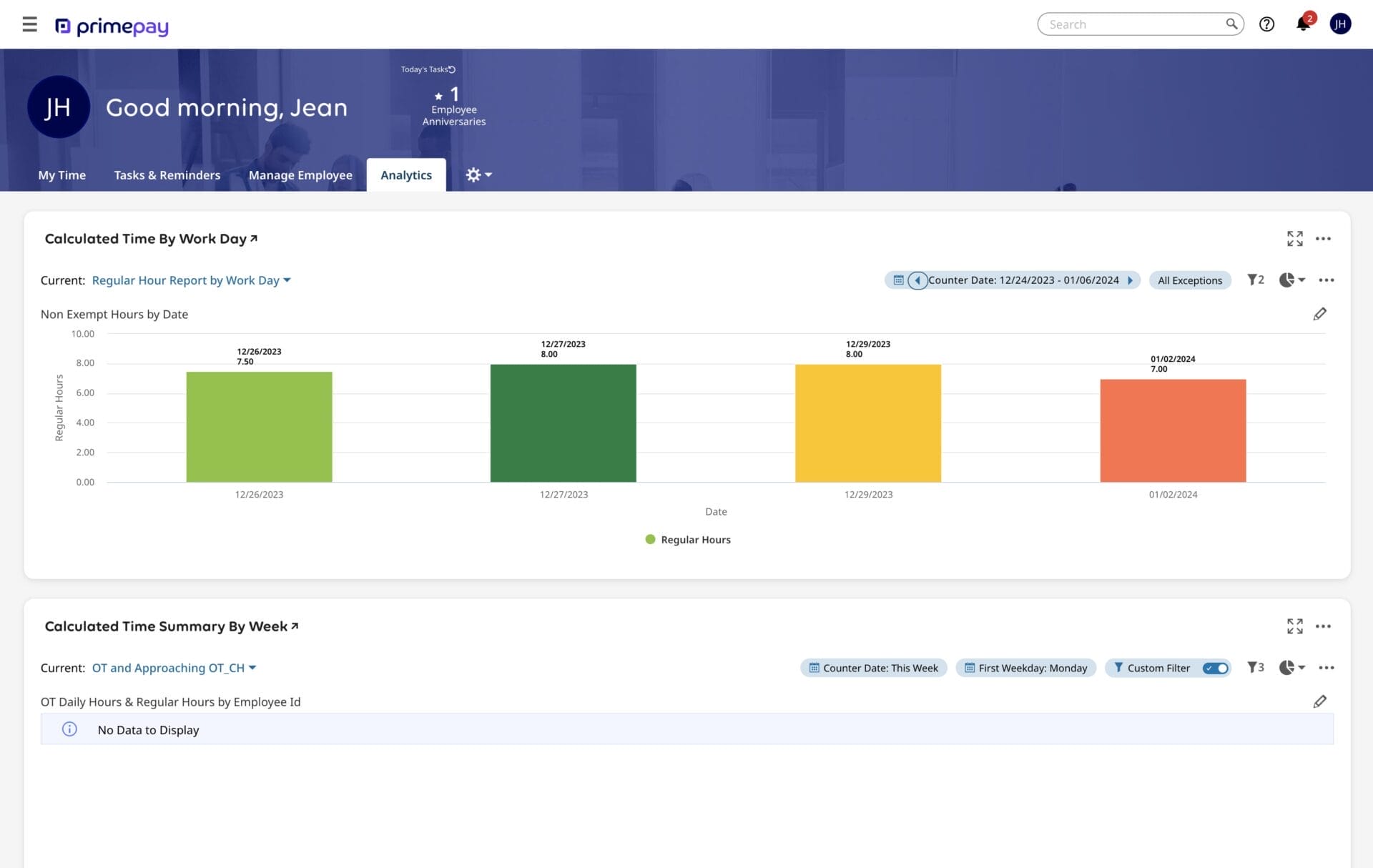
Analytics and reporting interface screenshot
Improve Efficiency with Software
Most businesses demand greater efficiency — and that includes a time and attendance system upgrade. Often these tools will be part of payroll software programs.
Time and attendance systems offer support to make manual processes more efficient for employees, managers, and executives.
- Employees can keep track of their time independently.
- Managers can approve entries for groups, projects, and individuals – no transcribing data for other systems or micro-managing time clock issues.
- Executives make better, faster resource planning decisions with real-time reporting features.
Additionally, built-in accruals, absence management, and scheduling give you greater control and visibility into your workforce and help you stay compliant. Your best bet? Using a Time and Attendance ROI tool to see just how much your manual time and attendance process costs you.
Ultimately, upgrading how you handle time and attendance can improve your error-ridden process to an automated, efficient, and fair process for your workforce.









